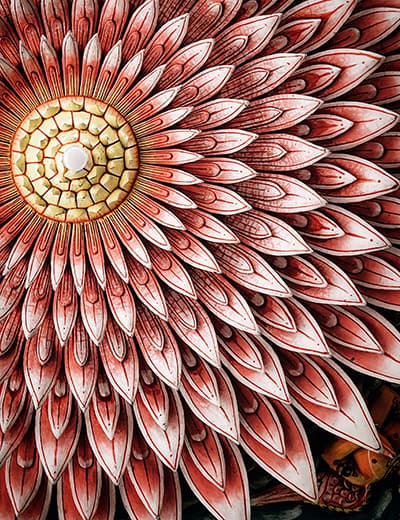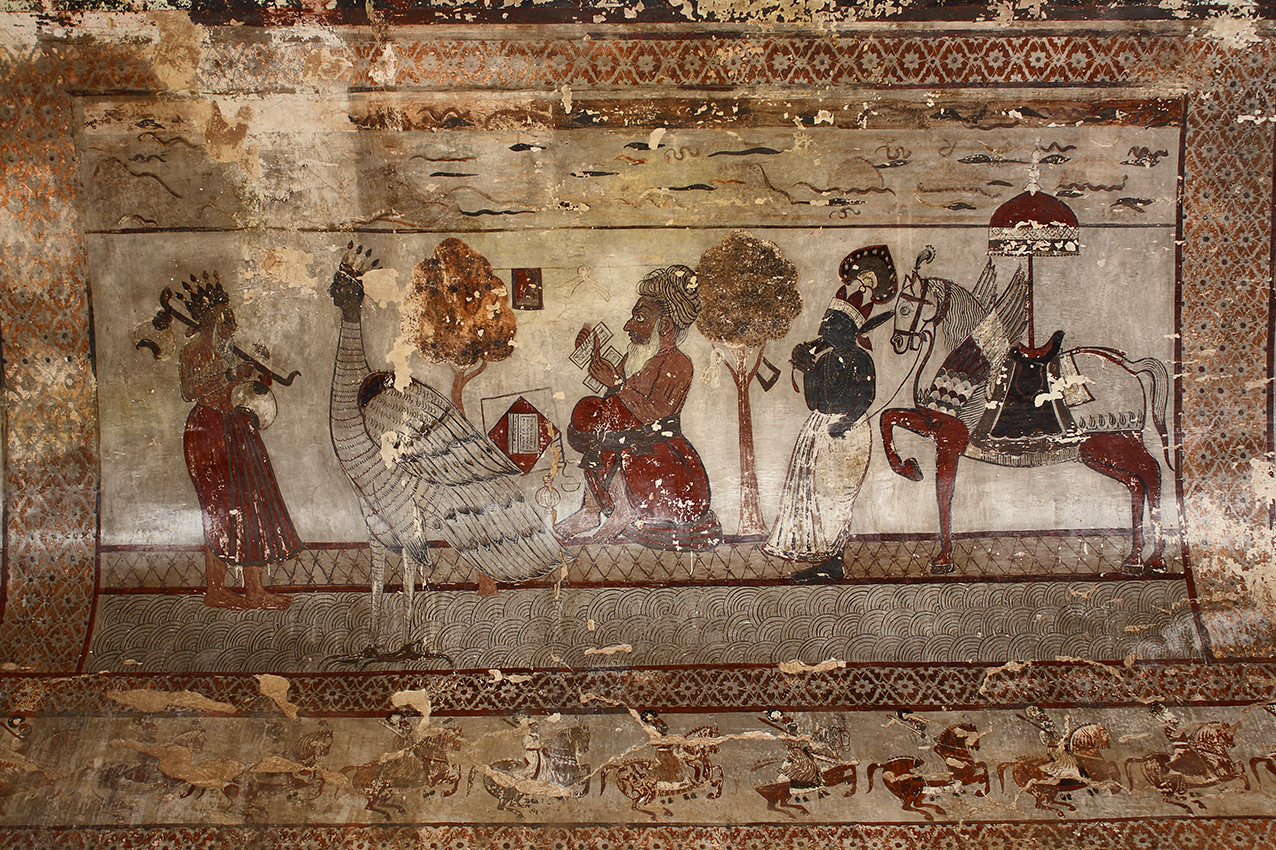
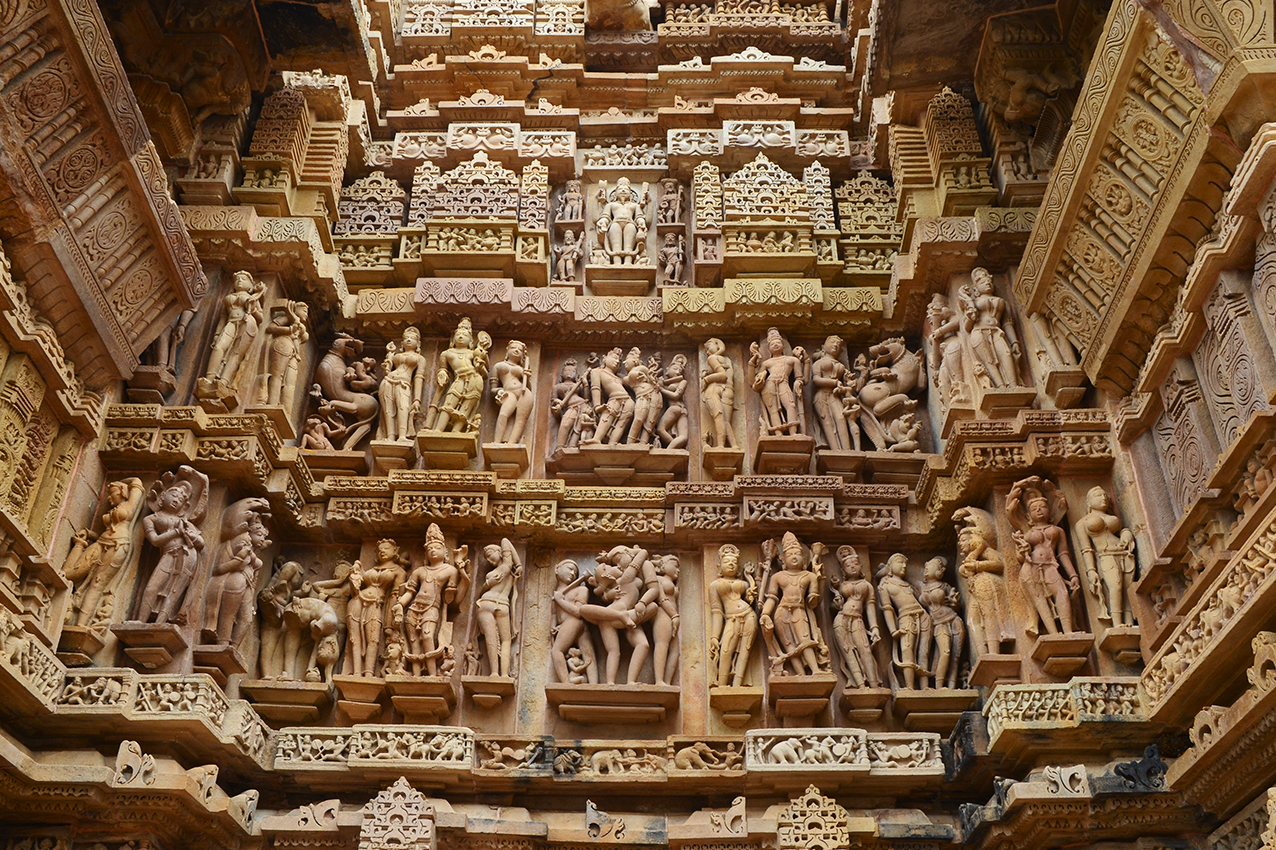
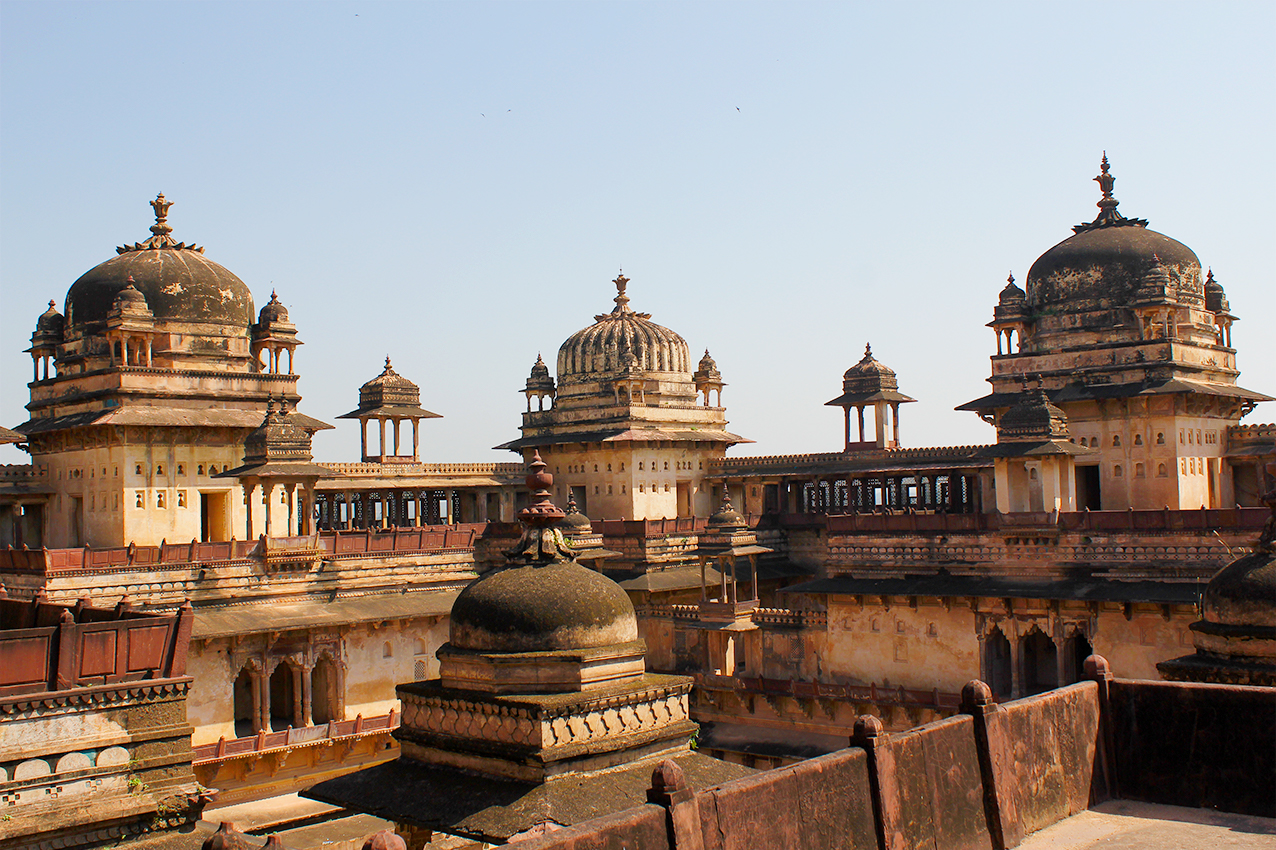
Ancient myths brought to life under the gentle guidance of the sculptor now repose in forgotten glory. A massive fort nurtures within its walls, living stories. Conical domes – chhatris – peer out of green foliage. Symmetrical white lines meet at the top of an arch, marble in sandstone. Through the black bars on the windows of a train, landscapes become a blur.
This journey delves deep into the history of Madhya Pradesh, examining the many influences that gave birth to the land that lives today. Begin this journey in Gwalior, where a living fort sprawls across a hill. In the former princely state of Orchha, meet a sea of sublime edifices dominating the skyline. Meander through the sculpted temples of Khajuraho, where history meets legend. In the caves of Bhimbetka, discover the ancient relationship humans have with art. Draw your journey through history to a close in the city of Indore, where traditions came together to give birth to an array of architecture.
In the stately city of Gwalior, witness the turning of the pages of history within its many monuments. Legend gave life to the Gwalior Fort, one of the most expansive and majestic forts in the country, which has grown with every dynasty that has ruled here. At one point under the rule of the Slave Dynasty of Delhi, then the Tomars, who endowed the city with its many Jain sculptures. Later it was ruled by the Mughals, and then finally the Scindias, who were heavily influenced by the British. Explore the remnants left behind by each empire, marvellous structures from different schools of architecture.
Drive down to the medieval city of Orchha, an urban settlement that seems preserved in time. Witness a cityscape born 500 years ago, an array of intricate palaces, temples, and cenotaphs, distinct against the waters of the Betwa. The Chaturbhuj temple, dedicated to Rama, an avatar of the god Vishnu, built to resemble the four arms of the god – chatur meaning four and bhuj meaning arms – is one of the oldest structures here. A stunning structure of note is the Jahangir Mahal, paragon of Mughal architecture, that was built for the Emperor on his visit here.
In the ancient town of Khajuraho, find temples that were built more than a thousand years ago. Known for the exquisite detail in their sculptures, these facades depict themes from daily human life, famously recognised for their overtly erotic themes. Made of sandstone, the temples were originally near water bodies, as is typical of Hindu temples, and reflect central Hindu beliefs in their construction. Interspersed within them are Jain temples, of equal intricacy and age, containing within them legends of old.
From the green city of Bhopal, venture into Sanchi, a village brought into prominence by Emperor Ashoka in the 3rd century BCE. The great Stupa here was built as part of a larger plan by the Emperor to spread Buddhism across the country. In the caves of Udayagiri, unearth reliefs of Hindu gods in their avatars, when they descended to Earth to save humanity from evil. Ramble into the rock shelters of Bhimbetka, dating back to the Stone Age, and discover interactions between the community and the landscape that lived then.
After a brief road trip, emerge in the Indore of the Holkar dynasty as well as that of the British, illustrative in the many architectural remnants of both rules. Venture into Maheshwar, a site of pilgrimage on the banks of the Narmada that finds mention in several tales from mythology. In Mandu, weave through structures of Pashtun architecture, exemplified in the floating Jahaz Mahal set between two lakes, or Roopmati’s Pavilion, an observation post with a romantic history.
-
Cities
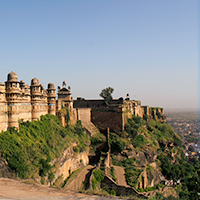
Gwalior
Overlooked by a majestic hill-fort, Gwalior traces its history through several dynasties, most notably the Mughals and the Scindias of Marathas. One of the most formidable strongholds in the country, the Gwalior Fort houses prominent architectural remnants built over the centuries. The city also has a rich history in music traditions, known for being the birthplace of both the oldest Hindustani gharana and Tansen, Emperor Akbar's most lauded singer.
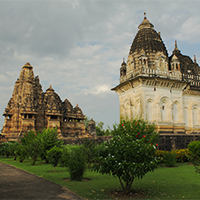
Khajuraho
In the heart of the country are found a collection of Hindu and Jain temples, coexisting in harmony for more than a thousand years. What gradually came to be known as Khajuraho, this group of monuments are heralded for the intricacy of their sculptures as well as durability of their design. Being isolated in geography, the temples largely escaped raids of rulers over the centuries, mostly retaining their original forms.
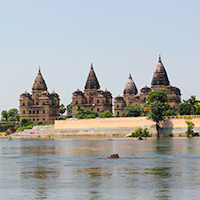
Orchha
On the banks of the river Betwa lies historic Orchha, weaving tales of princes, panoramic views, and elaborate architecture. The mighty Orchha Fort located on an island in the river is a grand complex of palaces and temples, the Jhansi Fort a perfect example of good garrisoning, and the sprawling wildlife sanctuary home to many species of birds and animals. All this, and more awaits the uninitiated at Orchha, a haven for those with a penchant for antiquity.
-
EXPERIENCES
Cycle in a natural reserve
Go on a cycling tour of the Orchha Wildlife Sanctuary, a rich spot of biodiversity flanked by the two rivers Betwa and Jamni, and observe indigenous flora and fauna, like the spotted deer, nilgai, and the blue bull, especially a vast reserve of birds.
Experience prayers at the town's holiest shrine
Early in the morning, visit the Matangeshwar Temple, the only Hindu temple still active in the Western Group of Monuments, and witness the morning aarti. Built in the 9th century, the temple is known for its eight feet high Shiva lingam crafted from yellow sandstone.
Explore ancient caves
Dating back to the 5th century, the caves of Udayagiri are some of the oldest temples found in India. Containing reliefs of Vishnu, Shakti, and Shiva, they reflect the predominant ideologies of the Gupta period, the age when they were built.
Visit the Sarafa Bazaar
A popular market in Gwalior, Sarafa Bazar is known for its handicraft, textile, and jewellery shops, displaying and selling wares produced locally. One can find exquisite handmade carpets and wall-hangings from different weaving traditions, some of which even date back to medieval times.
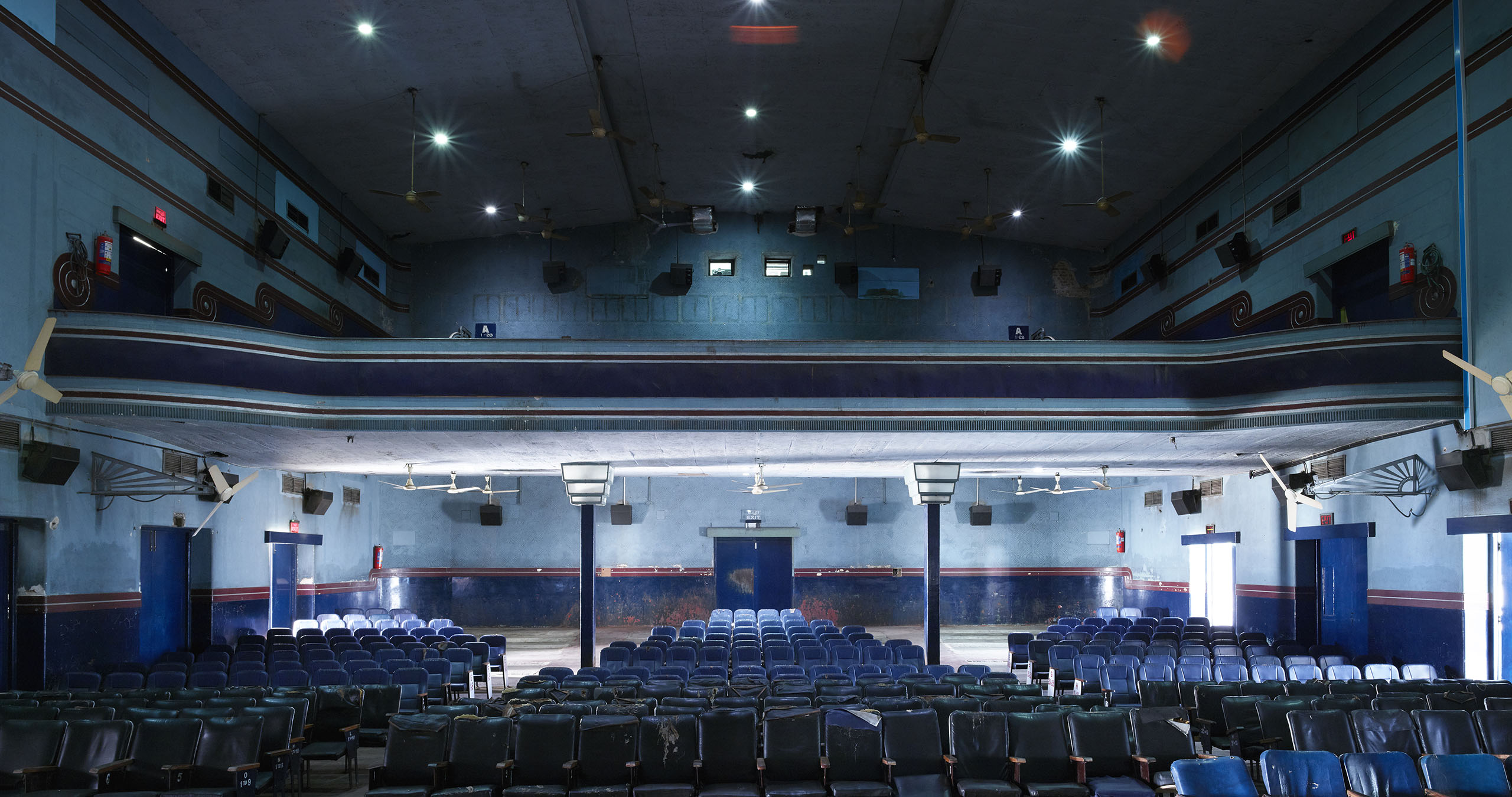
Cathedrals of Ecstasy
Retrace our steps with Hole & Corner as we explored the derelict performance spaces of Chennai and Madurai in the south...
Behind-The-Scenes • South India
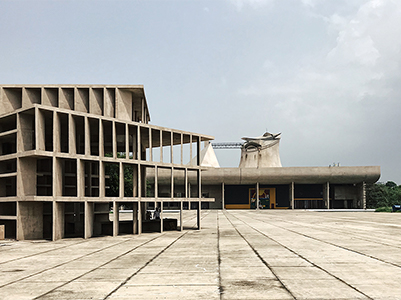
Monuments of Minimalism
This journey across the North and West explores the phenomenon of modern architecture that gripped India during the 20th century...
Bespoke Journey • North India
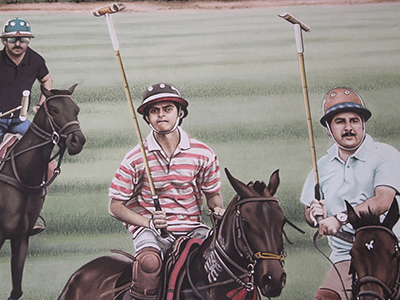
Polo, the game of kings
On the polo ground, two teams of four players on horseback rush in the direction of the wooden ball, jumping, flying, and whistling through the air...
Narrative • North India
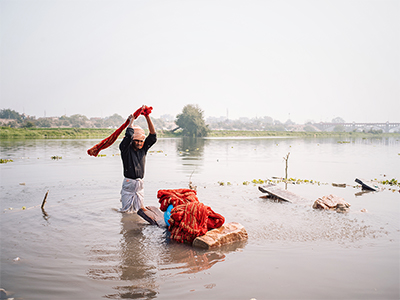
Riverine Tales
Traversing binaries of the divine and the mundane, smudging the pure and the impure, a river accommodates all...
Narrative • North India
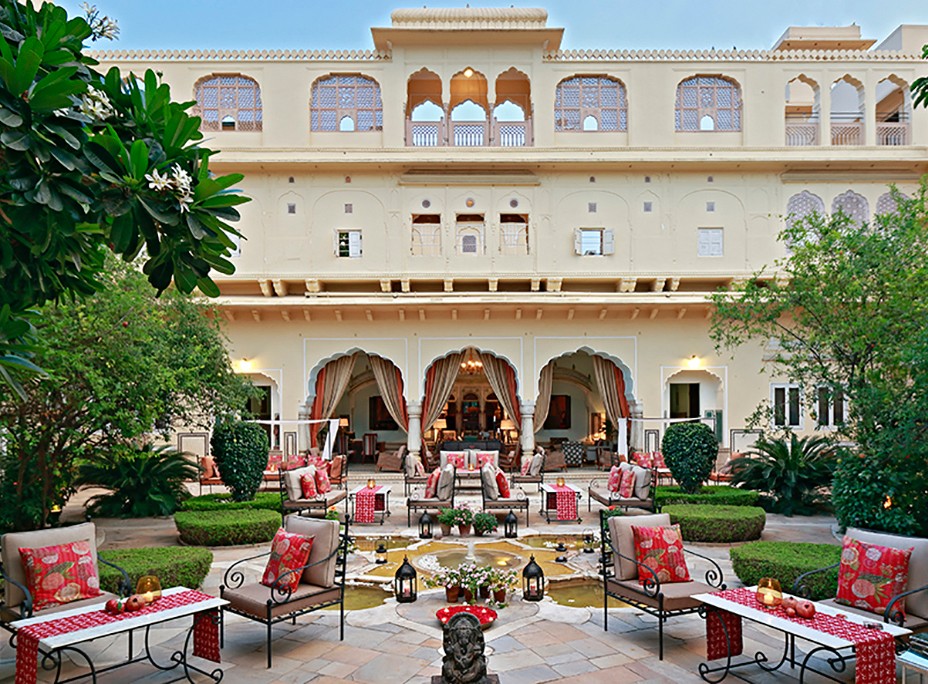
Samode Haveli
A cherished royal treasure in the walled old city of Jaipur, Samode Haveli is a traditional Indian mansion...
Hotel Guide • North India
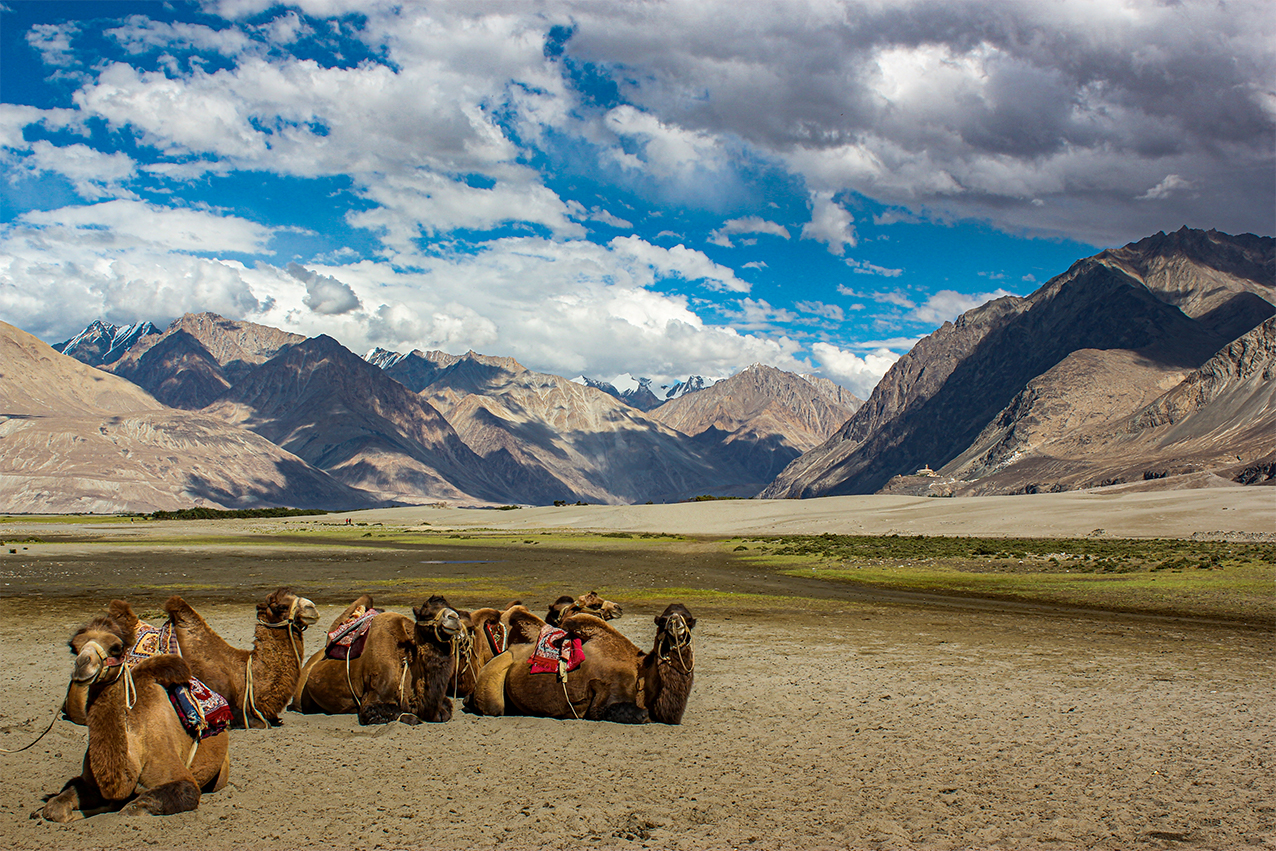
A Wondrous Moonland
A journey that takes one through the surreal mountainscapes and the unique lifestyles of the Ladakh region...


